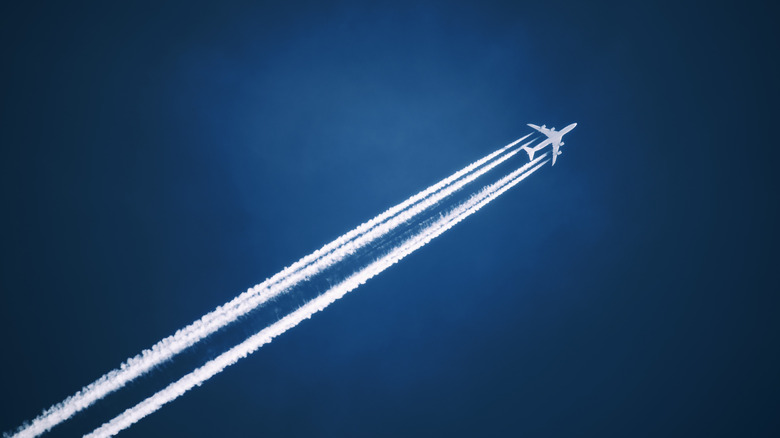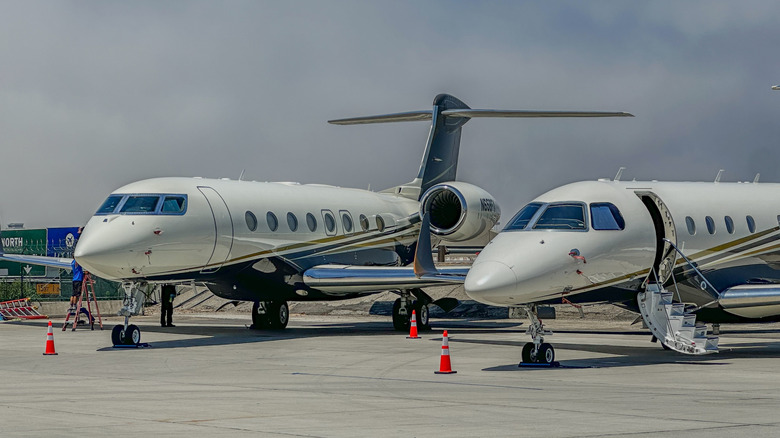Do Private Jets Fly Faster Than Commercial Planes?
Private jets are seen as symbols of wealth — the kind of indulgence reserved for celebrities or CEOs looking to avoid the horrors of airport security. While luxury is part of the appeal, it's the time saved that keeps them in regular use by executives, politicians, and anyone else whose schedule doesn't allow for layovers or boarding delays. They skip long security lines at the airport and depart on flexible schedules.
However, are they actually faster in the air than commercial airliners? The short answer: Usually, but not always. Private jets are designed to cruise at higher speeds than most commercial planes, but factors like flight paths and aircraft type all play a role.
Private jets prioritize speed and efficiency, often flying at altitudes above commercial traffic to avoid congestion. They take off from smaller airports with less congestion, reducing time spent taxiing or circling before landing. These door-to-door time savings often make private jets the faster choice overall, even if their speeds aren't drastically different from commercial aircraft.
Speed comparison between private and commercial aircraft
The assumption that private jets are significantly faster than commercial airliners isn't always accurate. In terms of cruising speed, the gap is narrower than expected — and in some cases, commercial aircraft are just as fast or faster. Most private jets fly at speeds around Mach 0.78 to 0.81, or roughly 515 to 621 mph.
A Gulfstream G650, one of the fastest private jets, can reach Mach 0.925 (710 mph). The Bombardier Global 8000, set to enter service soon, reportedly reached Mach 1.015 in test flights and flew faster than the speed of sound — though its certified cruising speed is Mach 0.94 (about 622 knots or 715 mph).
Commercial aircraft, on the other hand, vary by type. Narrow-body jets like the Boeing 737 and Airbus A320 typically cruise around Mach 0.78 (598 mph). Widebody, long-haul jets like the Boeing 787 and Airbus A350 reach Mach 0.85 (652 mph), which is nearly on par with or faster than many private jets.
The fastest commercial aircraft in operation today is the Boeing 747-8, with a cruising speed of Mach 0.855 (656 mph). However, this figure falls far short of the Concorde, which held the record for the fastest private jet at Mach 2.04 (1,350 mph) before it was retired in 2003. If we compare speeds alone, private jets generally hold an advantage over smaller commercial aircraft, but not necessarily over large, long-haul airliners.
Why private jets save more time
Speed is only part of the equation. The biggest advantage of private jets is efficiency. A commercial flight requires passengers to arrive hours in advance, pass through security, and deal with boarding delays. Private jet passengers can arrive 15-30 minutes before departure at a Fixed-Base Operator (FBO) and take off immediately. On arrival, disembarkation is just as fast, often with customs clearance handled on the tarmac and luggage delivered directly to the car.
Another factor is routing: Private jets use smaller, regional airports and can take more direct flight paths, avoiding busy commercial air corridors. This reduces flight time compared to commercial airliners, which follow set routes dictated by air traffic control.
The altitudes at which commercial jets fly also play a huge role in making the jet cruise faster. Most commercial airliners like the Boeing 737-800 operate at 35,000 to 41,000 feet, while private jets routinely climb to 45,000 feet or higher, with models like the Global 8000 reaching 51,000 feet. At those altitudes, air is thinner, turbulence is lower, and air traffic is minimal, allowing private jets to maintain cruise speeds more consistently and fly more direct routes.
Ultimately, while private jets don't always fly significantly faster than commercial planes, they make up for it by minimizing time spent on the ground.


